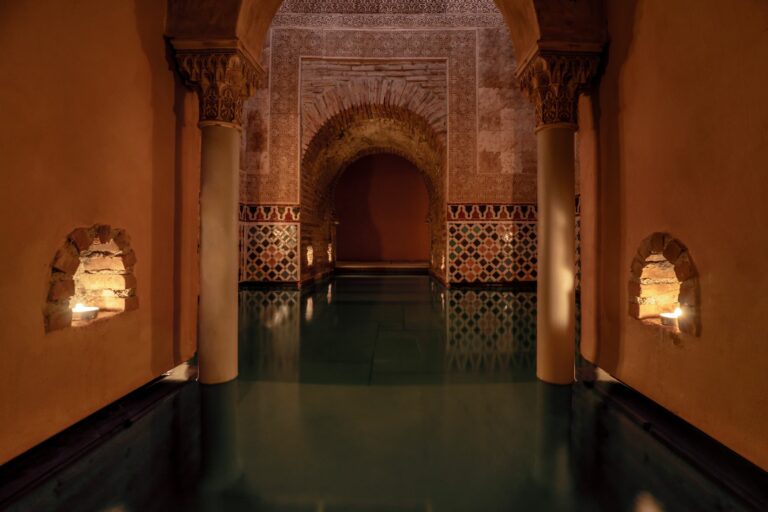Streets of Granada: Poetry, legends, and tradition in every corner.
Contenidos
Even Granada’s street names feel Lorca-esque. Walking this city, crowned by the Alhambra, becomes a solemn act when you consider how many cultures shaped its intense beauty. The feeling grows stronger when you remember the artists who once made it their muse. Suddenly, you look up and find street names that sound more like a flamenco lyric or a poem penned from a lookout than like an ordinary avenue. Strolling this city feels dreamlike. Here are a few examples.
Calle Duende
Duende names the gift some people have to pour soul into flamenco—dance, singing, clapping, or guitar. Flamenco lives vividly in the Sacromonte and Albaicín, yet this street sits in the very center of Granada, around Puerta Real.
Calle Beso
There are many kinds of kisses. As you wander this Albaicín lane near Plaza Nueva, it’s easy to imagine romantic scenes from a 19th-century novel. The legend behind the name tells of a mother who kissed her daughter farewell after she died in her sleep days before her wedding. The kiss brought her back to life. Some say it was catalepsy, but neighbors chose the mother’s love as the miracle.
Calle Milagro
For many, simply walking Granada is a miracle—its beauty dazzles and overwhelms. There’s no certain origin for this Puerta Real street’s name, but the word itself reads like poetry.
Calle Yerma

Yerma is one of Federico García Lorca’s most famous plays, a searing rural tragedy—like Bodas de Sangre and La Casa de Bernarda Alba—where women struggle to have a voice. Yerma explores sterility and fertility. You’ll find this street in the Zaidín district on Granada’s edge.
Calle Niños Luchando
This name stands out for originality more than poetry. The street lies in central Granada near Calle San Jerónimo. An essay by Julio Belza and Ruiz de la Fuente recounts a possible origin: centuries ago two children playing in a house here knocked down a flimsy wall. Their father allegedly commissioned a marble relief of two boys fighting and placed it on the façade. Whether or not it existed, the curious name stuck.
Paseo de los Tristes
Widely hailed as one of the world’s most beautiful streets, it’s popularly known as Paseo de los Tristes, though the plaque reads Paseo del Padre Manjón. The nickname comes from the funeral processions that once followed this route toward the cemetery by the Alhambra.








